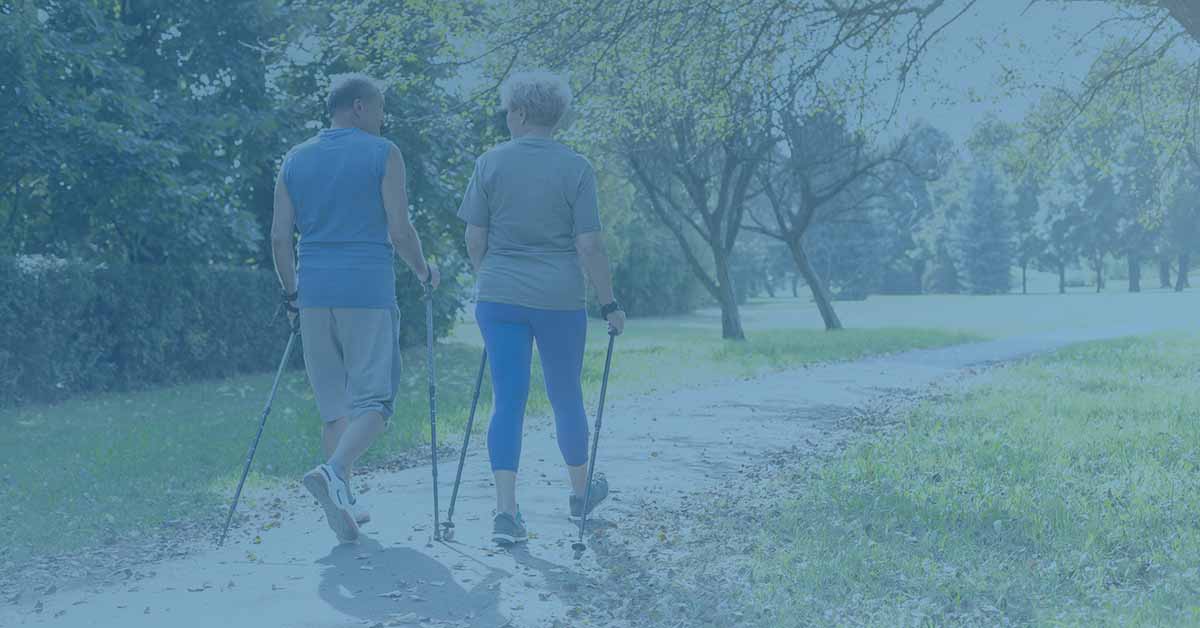Benefits of Walking for Seniors (Why Walking Is Beneficial?)
Do you enjoy walking regularly? Maybe you should. According to experts, walking could be the BEST exercise for the elderly.
Overview:
- EVERY walking step improves fitness and health. Studies show that walking is most beneficial for those who start from scratch. The joints withstand walking well, even if you are overweight.
- Exercise doesn’t have to be hard. Half an hour of walking five days a week is a good start. If it is too much at once, you can divide the walk into smaller portions.
- Even walking the same route each day has immediate benefits. But DEVELOPMENT requires variation in length, terrain, and pace of the walk.
- Before starting a new exercise routine, it is essential to know your overall health (especially cardiovascular health) and the conditions that might limit strenuous exercise.
- After exercise, it is vital to LISTEN to the feelings of your body.
- The new way of exercising can be felt in many ways, especially in the musculoskeletal system.
- The key is to start SLOWLY. As a result, the workout feels comfortable and easy to incorporate into daily life.
Getting adequate exercise is essential to keeping the body healthy. Still, specific programs can be unsafe for seniors and place them at risk of injury.
Walking is a low-risk exercise program that is SAFE and beneficial for most people.
Here Are Some Essentials for Walking
First, make sure you wear the right shoes for walking.
For most people, comfortable sneakers are the best way to go.
Consult a podiatrist if you have foot problems or need advice on suitable footwear.
The use of a walking cane does not hinder walking exercises. A walking cane helps maintain balance and relieves pressure on joints, making it easier to go outside.
Always carry your phone with you in case of an emergency.
The benefits of walking for seniors are worth checking out.
1. Walking Is Excellent for Cardiovascular Health
The heart is a muscle, and like most other muscles, it becomes STRONGER with use.
Walking is a great low impact way to raise the heart rate and improve cardiovascular conditioning as an aerobic exercise.
As with all types of aerobic exercises, the intensity of the workout determines how hard the heart will need to beat to power the body.
The lungs benefit from cardiovascular conditioning as well.
Walking and other aerobic exercises increase the capacity of the lungs. That allows them to work more efficiently in supplying oxygen to the blood.
Oxygen-rich blood keeps the body healthy and assists with mental clarity and focus as we age.
Running provides a lot of health benefits for seniors, and you can even start running in your 60s. The idea that it provides more benefits than walking has been around for quite some time.
This notion, however, is simply not TRUE.
A recent study found that the number of calories burned during the workout was the determining factor for the heart health benefits of exercise, not the intensity of the movement.
Walking for half an hour daily has the following effect, according to research:
- Functional capacity and independence remain.
- Stress relieves, and mood improves.
- The quality of sleep improves.
- Blood pressure drops.
- Cholesterol levels improve.
- Fat burns effectively (however, exercise, in the long run, is not a very effective way to lose weight).
- Metabolism speeds up a bit (walking maintains muscle mass, especially in the legs, thus increasing energy consumption).
- Your heart rate drops (your heart rate slows down by five beats per minute with regular walking).
- The risk of type 2 diabetes is reduced.
- The risk of coronary heart disease and stroke is reduced.
- Low-grade chronic inflammation is reduced.
- The risk of Alzheimer’s disease is reduced.
- The risk of premature death falls.
2. Lowers the Risk for Type 2 Diabetes
As we age, our risks of developing type 2 diabetes increase.
Diabetes is a disease of the endocrine system that prevents the body from properly using the glucose, or sugar, in the foods we eat.
Instead, the sugar remains in the bloodstream and damages the body in a condition known as high blood sugar.
Walking helps the body mitigate the chances of developing this disease as a natural part of aging.
Chronic high blood sugar levels lower the ability of the immune system to heal the body and fight off outside infections.
Due to damage to the vascular system, high blood sugar causes damage to the eyes in a condition known as diabetic retinopathy, leading to blindness.
3. Walking Helps with Arthritis Pain
A certain amount of wear and tear to the JOINTS is a part of aging.
Still, a painful condition known as osteoarthritis is part of their daily routine. It harms the quality of life for many Americans.
Osteoarthritis destroys protective tissues at the ends of bones to wear down. Eventually, this tissue destruction exposes the nerves inside the bone, causing pain.
Osteoarthritis is a condition that impacts a person’s life constantly. Many people diagnosed with the disorder report that the pain causes difficulty sleeping and a decreased ability to perform everyday activities.
Weight gain due to IMMOBILITY caused by arthritis is also typical.
Trying to get the body moving while in this type of pain can be challenging, and this is one of the main benefits that walking offers to this group of people.
Starting slow and setting small walking goals will allow constant progress at the best rate for the body. As with most things of this nature, consistency is the key.
4. Great for Vein Health
Varicose veins are a common medical complaint in the U.S.
While most cases are strictly cosmetic, some seniors experience pain and discomfort from these enlarged, often gnarled blood vessels.
Regular walking strengthens the circulatory system, improves vascularization in the legs, and delays the onset of the disease.
If you are already dealing with varicose veins, walking can help manage your symptoms.
5. Benefits of Walking for the Brain
Walking is a fantastic way to exercise the body.
It gets the heart pumping and activates the muscles and joints, but walking also has tremendous benefits for the BRAIN.
Improved Self Esteem
Walking and other aerobic exercises provide the brain with abundant nutrients and oxygen.
This nutrient boost promotes an adjustment in emotional stamina that fills you with confidence and lets you know that you can accomplish just about anything.
Improved Mental Focus
Leading a sedentary life leads to a thinning in areas of the brain that affect memory and mental focus.
Scientists now know that the brain can generate new nerve cells well into the senior years.
While this may sound positive, these new cells remove valuable resources from the existing brain infrastructure.
Regular exercises like walking promote healthy brain activity and keep you mentally engaged and active by improving cognitive function.
Using walking as part of your everyday self-care routine has far-reaching advantages.
Increased Socialization
Walking as part of a group gives you a valuable resource for socialization.
Being part of a group increases accountability and makes it much more challenging to become sidetracked and lose sight of the goal.
Due to life circumstances, seniors are the age group most likely to deal with social isolation.
The mental drain caused by social isolation and loneliness is currently being studied, but preliminary results are clear.
Lack of social connectedness affects the brain, placing the individual at increased risk for depression, decreased mental function, and premature death.
Increased Relaxation
Endorphins are chemicals in the brain that make us feel good when released. Walking is a great, natural way to stimulate this release.
The endorphins released by walking improve our mood and encourage relaxation.
In addition to the mood boost received from these endorphins, they are also powerful stressbusters that assist the brain in managing anxiety.
These benefits occurred while walking at a stroll or more moderate pace.
Ready to Get Started?
Walking is the perfect exercise for seniors for so many great reasons. Still, accessibility has got to be one of its most decisive advantages.
It doesn’t require any special equipment or a costly membership to a gym.
Moreover, going for a walk doesn’t require much time and can be performed virtually anywhere.
Walking is so versatile it can be built right into your day around your schedule.
So, don’t hesitate to add it to your routine and reap the benefits of staying physically active.





